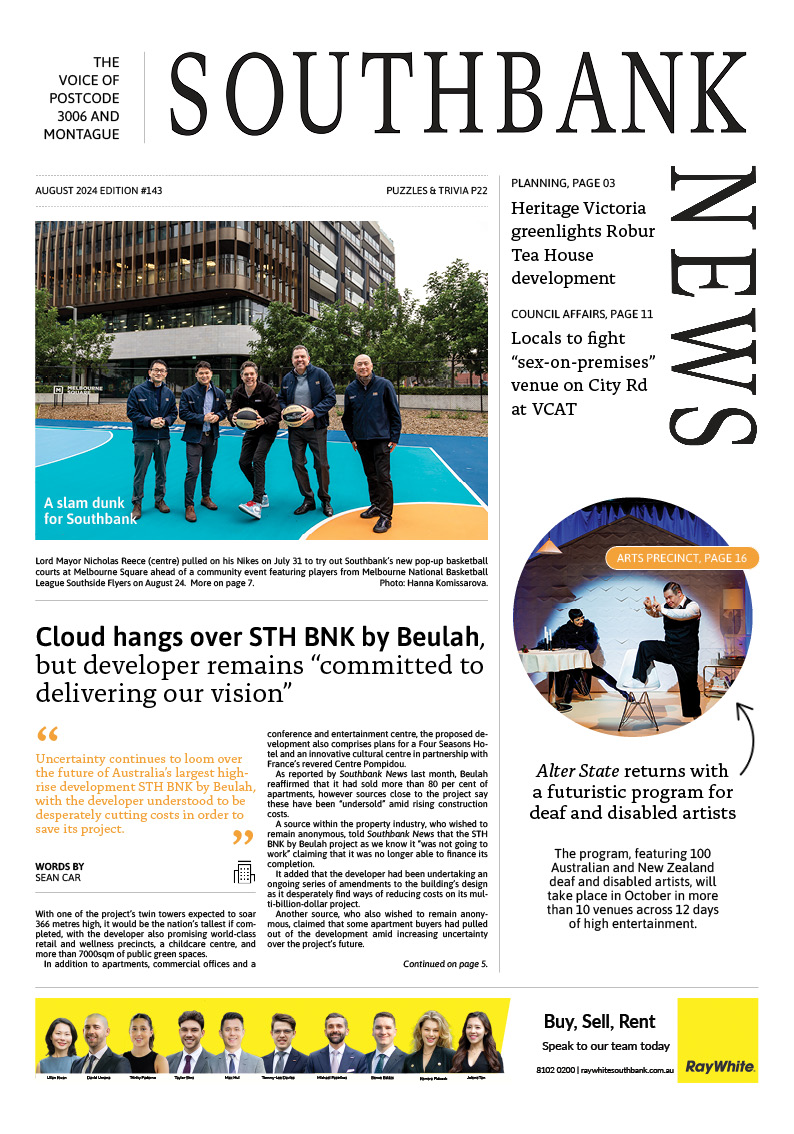Southbank traders are suffering from post-COVID working patterns
The increase in people working from home is leaving Southbank traders in dire straits as they continue to adapt to the market challenges spurred on by the pandemic.
Lino Scidone, owner of the prized La Camera and Waterslide Bar in Southbank, said that business had taken a turn since COVID-19 due to people’s working habits.
In a report published in July by the Property Council of Australia it was revealed that Melbourne’s CBD still has the highest office vacancy rate in the nation.
The report found that since July 2023 office vacancy in Melbourne increased from 14.9 to 18 per cent.
The effect of this is profound according to Mr Scidone, who said that he had been significantly impacted by a decline in business, with fewer people coming in for lunch throughout the week and the Friday crowd declining.
He said the only day that Southbank traders had seen an increase in patronage at his venues was Saturdays when people chose to spend their day off wining and dining.
But he added that these increases didn’t account for the losses that was suffering throughout the week, particularly between Monday and Thursday.
“Everyone says that Thursday is the new Friday and that’s a lie because the next day is a working day so no-one’s going to have the same attitude to what it was like on Friday,” he said.
At the Meet the Mayor event hosted by residents’ group Southbank3006 in August, Lord Mayor Nicholas Reece said he was working to bring back the city economy and that he would urge workers to return to the office.
The Lord Mayor said that while there was no “silver bullet”, the City of Melbourne was actively working to resolve the situation.
A report on the city’s day- and night-time economies tabled at the July 9 Future Melbourne Committee meeting revealed that morning commuter traffic between 6am and 9am at Flinders Street Station underpass was at 69 per cent of May 2019.
The report also brought to light that Melbourne’s shopfront vacancy rate was just over 10 per cent, down from a pandemic peak of 31 per cent.
In light of this report, the council unanimously voted to endorse a motion requesting management to work with stakeholders to develop roadmaps to guide the city’s support for the retail and hospitality sectors.
“Our daytime economy continues to be a key challenge for our city. Although consumer spending is close to pre-pandemic levels, there is no doubt businesses across our city are struggling,” the council’s city activation portfolio lead Cr Roshena Campbell said.
In November last year, the council established the City Economy Advisory Committee, which brings together industry leaders from sectors like hospitality, retail, tourism to advise councillors on the best way to address the issue.
The advisory committee mooted key actions that could help improve the situation, with the changes to public transport considered to be a priority according to Cr Campbell.
She said that public transport needed to be tailored to meet the changes in demand, exploring options such as variable transport fares and making fares cheaper on “slower days” throughout the week.
Another focus for the council, according to Cr Campbell, was to share pedestrian activity and consumer spending data for different geographic areas in the city.
“This will help shopkeepers and restaurateurs make sure that they’re matching their labour staffing and their industry to the levels of demand,” she said.
While Lino Scidone remains “unsure” about what the future holds, he said he was pleased with the efforts that Lord Mayor Nick Reece and the council were putting into improving the situation that traders in the city were currently facing. •

Cloud hangs over STH BNK by Beulah, but developer remains “committed to delivering our vision”







 Download the Latest Edition
Download the Latest Edition